1. Iced coffee is worth more than £230m in the UK
2. Gen Z is more likely to drink RTD than hot coffee
3. Convenience commands a 26% share of chilled coffee volume
4. Brands are busy chasing the ‘protein pound’
5. Flavoured milk is growing 11.9% year-on-year and worth £304 million in convenience
6. Breakfast is boom-time for dairy
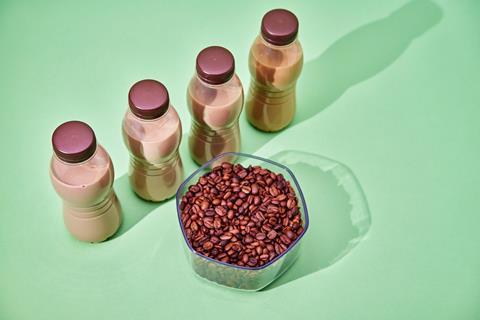
1. Iced coffee is worth more than £230m in the UK
So how do you like your coffee in the morning?
For growing hordes of consumers the answer no longer involves use of a kettle or even a shot-wielding barista with a goatee. For them a caffeine hit increasingly comes in a can from their local c-store – thanks to the soaraway success of RTD coffee.
“The UK’s Iced Coffee market has experienced significant growth over the past three years, establishing itself as a key player within the soft drink category,” says Adrian Hipkiss, commercial director at Boost Drinks.
“[It has] a market share now exceeding £230m [Circana Total Market & GB Symbols & Indies and NI Convenience 52wk 29.06.24] playing a notable role in the overall £12.3bn soft drinks market. This growth reflects a rising consumer preference for ready-to-drink Iced Coffee products.”
You can say that again. Over a quarter of households currently buy RTD coffee [Kantar Combined Panel 52 w/e 09.06.24] and the segment has scored a 101% sales increase in symbols and indies since 2020 [Circana Total Market & GB Symbols & Indies and NI Convenience 52wk 29.06.24]. Not bad considering the economic storm-in-a-coffee-cup over those years.
“This sector has shown remarkable resilience and adaptability in the face of global challenges and changing consumer habits,” Hipkiss confirms.
Nishi Patel from Londis Bexley Park agrees that RTD coffee is huge for his store.
“It’s a growth area and might be the biggest growing line in-store right now,” he says. “We used to have one shelf and today we’ve got three shelves of them. I think a big part of it is that you can buy them from big names like Starbucks and Costa. It’s a drink that you have on the go from one of the big brands available in loads of nice flavours. People love that.”

2. Gen Z is more likely to drink RTD than hot coffee
Just like energy drinks, RTD coffee has massive appeal to the skibidi toilet generation – with the extra benefit that they don’t have to be over 16 to score a can.
“With Gen Z consumers more likely to drink RTD coffee than hot coffee, this is an exciting space to be in right now,” says Stuart Wilson, founder of speciality coffee brand, Lost Sheep Coffee.
“Fuelled by 24/7 lifestyles, shoppers are looking for new ways to drink great coffee on the go, and the category is buzzing. The opportunity for high quality affordable RTD Iced Coffee in the convenience market is huge – it’s the ultimate convenience product for consumers who don’t have time to make a coffee at home or wait at the coffee shop.”
Yet it’s not just the youthful fantum tax types topping up with the cans. According to Liam Cross from Spar Dersingham in Norfolk, it’s basically anyone under 55.
“We now do well with RTD coffee all year round,” says Liam. “It’s students, parents and everyday general customers. The only people who don’t buy into it so much are the older generation.”
This prevalence of younger shoppers is reflected in iced coffee’s flavour profiles. While traditional espresso flavours are all present and correct there’s also a plethora of sweeter styles too.
“Flavoured Iced Coffees are a driving force within the category, with specific flavours like caramel seeing a 24% increase and accounting for 21% of category sales [Circana Total Market & GB Symbols & Indies and NI Convenience 52wk to 27.01.24],” says Hipkiss.
“Boost’s Caramel Latte has been particularly successful, aligning with this trend and elevating its market presence.”
ADVERTISEMENT
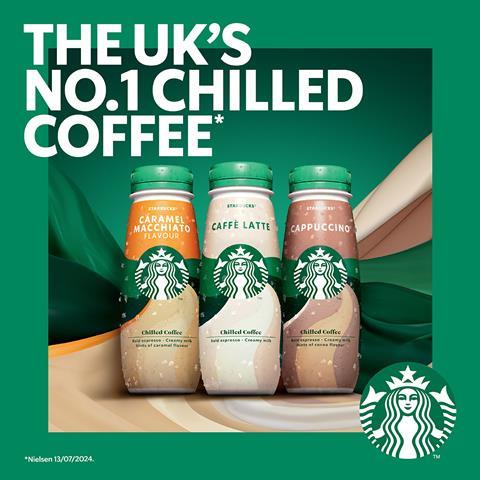
Stock up on the UK’s number one chilled coffee* and treat your customers to the taste they love. With Starbucks® making up 56% of RTD coffee sales in Convenience*, our drinks are a customer favourite. Starbucks® has added +£1m new shoppers added in the last two years* alone, solidifying Starbucks® as the go-to brand for coffee lovers. With an impressive +18% growth year on year*, offering a variety of our popular chilled coffee flavours is the perfect way to meet customer cravings and lift your sales. Don’t miss out—visit your wholesaler today and stock up on Starbucks® Chilled Coffee!
* Nielsen Date 13/07/2024
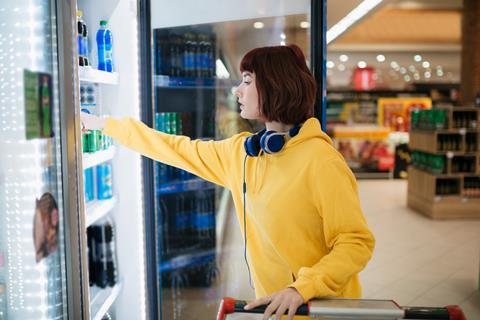
3. Convenience commands a 26% share of chilled coffee volume
Happily, c-stores and RTD coffee go together like milk and two sugars. As Amy Burgess, senior trade communications manager at Coca-Cola Europacific Partners (CCEP) explains, it’s first and foremost an impulse product.
“The majority of shoppers will buy RTD coffee on impulse and expect to find it in the chiller ready to enjoy straight away [IRI 52WE 14.04.24]”, she says.
“Less than half of RTD coffee shoppers plan what they’re going to buy before they go into a store [Brand Potential Shopper Research x Costa, April 2023], so RTD coffee is often chosen because it catches the consumer’s eye – which is why location in store is incredibly important.”
Now the on-the-go market is fully back after Covid-19 local stores are becoming a big retail connection for the sector.
“Chilled coffee continues to be an undisputed success story within the wider soft drinks category, and nowhere is this more evident than in the convenience space,” says Abigail Kelly, head of marketing and insight at Arctic Coffee Ltd.
“This channel contributes a formidable 26% share of all chilled coffee volume and 29% share of value [as above], underpinning its significance for retailers.”
Despite this, she reckons c-stores are slightly “underperforming” on volume against the multiples – at 4.9% vs +6.4% respectively [IRI 52WE 14.04.24]. However, Kelly adds that over half (57%) of chilled coffee drinkers purchase it more than once a week, and a quarter choose to head to their local convenience shop to buy [as above], giving stores plenty of scope to overcome this barrier.
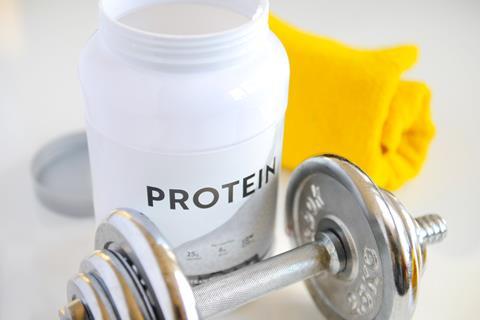
4. Brands are busy chasing the ‘protein pound’
So where can brands go in RTD coffee when all the flavours are maxed out? For many, where there’s protein there’s profit as they hop on the functional nutrition trend.
“We’re doing a trial with Jimmy’s Iced Coffee at the moment and they’ve got a protein line in there,” says Nishi.
“It’s the same with Starbuck’s – brands seem to be introducing protein products into the canned coffee market.”
Kelly says this is part of the overall drift towards health in convenience.
“Across all categories, including chilled coffee, consumers are gravitating towards products that offer additional nutritional benefits and will actively seek out brands that deliver on this,” she says.
“A clear front-runner here is protein, which is why this year Arctic Coffee met this demand for consumers by bringing to market Hi Protein Caramel Latte, a delicious, chilled caramel latte with 15g Protein.”
Meanwhile, Jimmy’s Ice Coffee has chosen MyProtein as a partner for its MyProtein Iced Coffee, which packs 5.6g of the muscle-building stuff into each 100ml.
The launch is set to help retailers tap into the UK protein market, which is estimated to reach over £438m in 2024 [Mordor Intelligence, United Kingdom Protein Market SIZE & SHARE ANALYSIS - GROWTH TRENDS & FORECASTS UP TO 2029, 2017-2029].
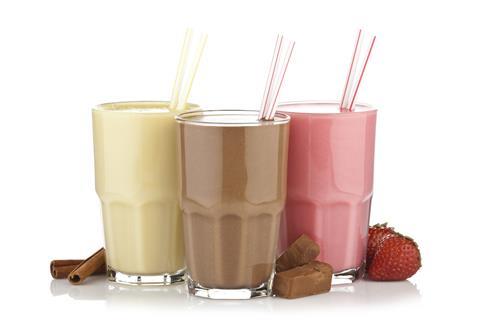
5. Flavoured milk is growing 11.9% year-on-year and worth £304 million in convenience
“The flavoured milk category presents a great opportunity for retailers, with the category growing by 11.9% year on year,” says xx xx Mars.
“Coffee and chocolate remain the outstanding favourite flavours [IRI 52 w/e 6th July 24, Convenience, Value Sales].”
That’s definitely not news for Nishi. He says that Mars, Malteasers and Galaxy drinks all do well in his store.
“I think that when it comes to chocolate people are more likely to pick up a brand they recognise rather than something like a Spar chocolate milkshake. They’ll spend the extra 50p.”
Liam also recognises a shift towards premium picks in dairy drinks.
“I think that people are looking for more of a premium offering over own brand in dairy drinks,” he says.
“It’s definitely down to the success of brands like Shaken Udder. They look premium but they’re actually not that expensive and we shift a lot of them when they’re on promotion. Ultimately, they look nice for the consumer.”
And while we’re dwelling in dairy – don’t forget the power of yogurt drinks.
“Milk-based dairy drinks are growing in popularity but it’s worth noting that yoghurt dairy drinks are growing at +31% [Dunnhumby 52wks 14th July 2024] which, as the only branded yoghurt based drink on the market, is being driven by Yop,” says Ewa Moxham, head of marketing for Yoplait.
“Our insights show that consumers, especially teenagers, are seeking out these drinks for refreshment and hunger fill. And consumers love the taste. Our portfolio is geared towards fruit flavours which consumers really enjoy and gives the brand stand-out in the more chocolate flavoured milk drinks.”
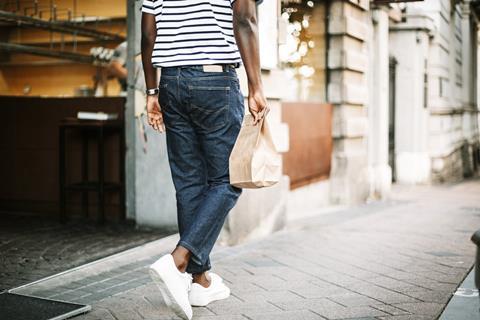
6. Breakfast is boom-time for dairy
Meal deals are really important for dairy drink brands. With the cheaper overall bundle price shoppers are more likely to try something different.
“The rise of the meal deal among independent retailers is particularly noteworthy, offering a strategic avenue to boost sales within these categories as consumers choose offerings, like RTD Iced Coffees, to trial new drinks outside of their normal rotation,” says Hipkiss
This means making sure that the category is in sight of snacks and other food – especially in impulse areas.
“RTD chilled coffee benefits from being an increasingly popular accompaniment to a snack or a meal, making it important to ensure there’s a range of on-the-go packs available in chillers, alongside food options in the impulse front of store area,” says Burgess.
This is an important factor for new names to the market – like Nomadic’s Fuel Up drinks, released to Spar stores this year. Each drink features protein and vitamins to hit the early morning health spot. Michelle Bloom, Nomadic’s marketing manager, maintains that breakfast is a big time of day for the drink.
“The breakfast-to-go market is growing massively, both in terms of people taking it with them en-route to work and grabbing it via convenience stores,” she says
“We think – and lots of evidence points to this – that it remains the ‘most important meal’ of the day. It’s the one that people most actively try to avoid missing. So, going forward, any retail ‘meal deal’ shouldn’t just be about lunch.”




















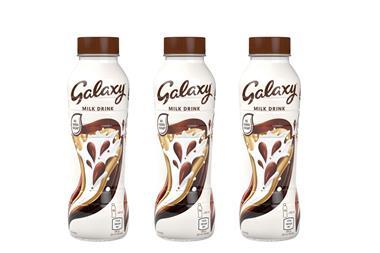
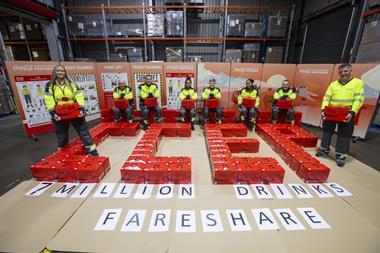
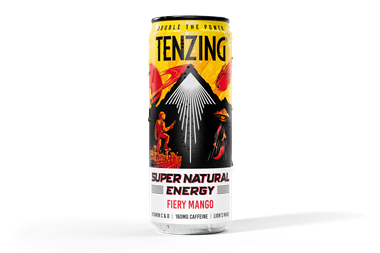

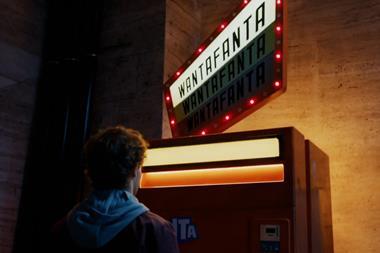
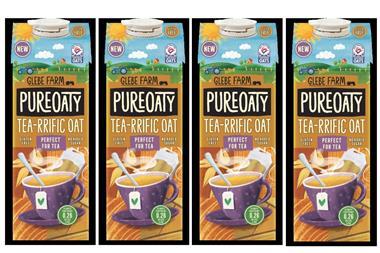






No comments yet